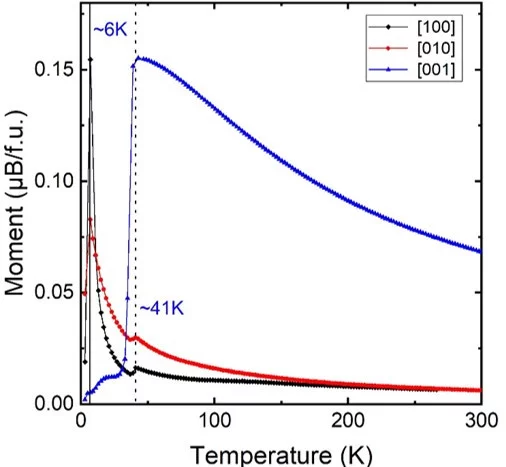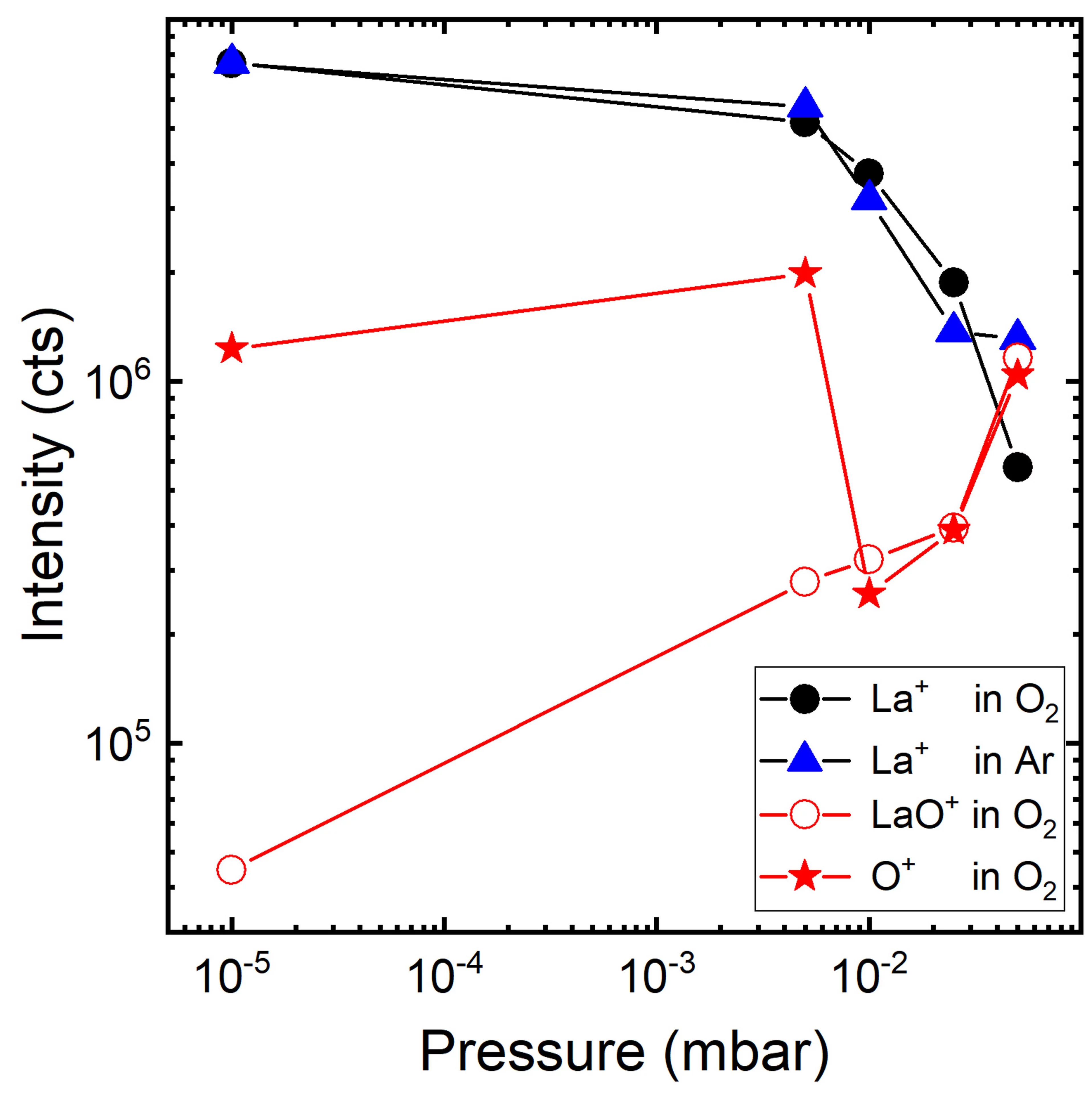This page gives an overview about the currently published activities of the group.
The reseach activities are centred around the preparation and characterization of thin films using pulsed laser deposition and partly bulk materials. To synthesize and study bulk is useful since we prepare most of the time the target materials we use ourself.
Multiferroics - Role of Dy on the magnetic properties of orthorhombic DyFeO3
Orthoferrites are a class of magnetic materials with a magnetic ordering temperature above 600 K, predominant G-type antiferromagnetic ordering of the Fe-spin system and, depending on the rare-earth ion, a spin reorientation of the Fe spin taking place at lower temperatures. DyFeO3 is of particular interest since the spin reorientation is classified as a Morin transition with the transition temperature depending strongly on the Dy-Fe interaction. Here, we report a detailed study of the magnetic and structural properties of microcrystalline DyFeO3 powder and bulk single crystal using neutron diffraction and magnetometry between 1.5 and 450 K. We find that, while the magnetic properties of the single crystal are largely as expected, the powder shows strongly modified magnetic properties, including a modified spin reorientation and a smaller Dy-Fe interaction energy of the order of 10 μeV. Subtle structural differences between powder and single crystal show that they belong to distinct magnetic space groups. In addition, the Dy ordering at 2 K in the powder is incommensurate, with a modulation vector of 0.0173(5) c∗, corresponding to a periodicity of ∼58 unit cells.
B. Biswas; V. F. Michel; Ø. S. Fjellvåg; G. Bimashofer; M. Döbeli; M. Jambor; L. Keller; E. Müller; V. Ukleev; E. V. Pomjakushina; D. Singh; U. Stuhr; C. A. F. Vaz; T. Lippert; and C. W. Schneider;
Role of Dy on the magnetic properties of orthorhombic DyFeO3
Phys. Rev. Materials 6, 074401 (2022) DOI: doi.org/10.1103/PhysRevMaterials.6.074401
Plasma Spectroscopy - Gas Phase Reaction Dynamics
The gas-phase reaction dynamics and kinetics in a laser induced plasma are very much dependent on the interactions of the evaporated target material and the background gas. For metal (M) and metal-oxygen (MO) species ablated in an Ar and O2 background the expansion dynamics in O2 is similar to the expansion dynamics in Ar for M+ ions with an MO+ dissociation energy smaller than O2. This is different for metal ions with an MO+ dissociation energy larger than for O2. Here, the plume expansion in O2 differentiates itself from the expansion in Ar due to the formation of MO+ species. At a high oxygen background pressure, the preferred kinetic energy range to form MO species as a result of chemical reactions in an expanding plasma is up to 5 eV.
X. Yao; C. W. Schneider; A. Wokaun; and T. Lippert;
New Insight into the Gas Phase Reaction Dynamics in Pulsed Laser Deposition of Multi-Elemental Oxides
Materials 15, 4862 (2022); DOI: doi.org/10.3390/ma15144862






